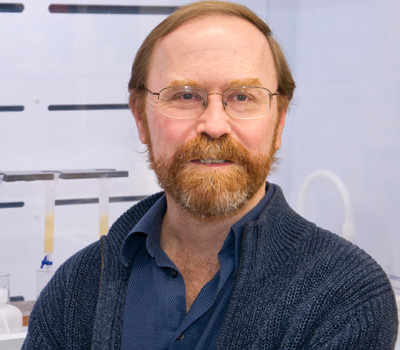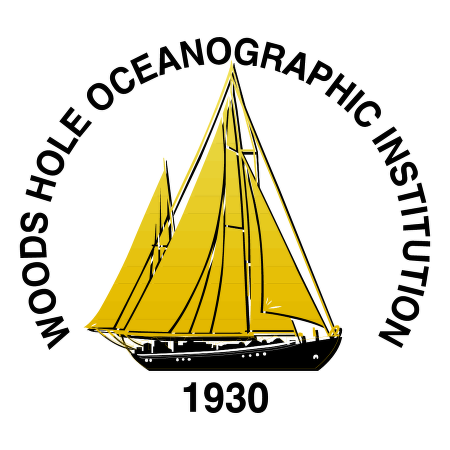Measuring radioactivity reaching US shores from the 2011 Tsunami in Japan
In the aftermath of the 2011 tsunami off the coast of Japan, the Fukushima Dai-ichi nuclear power plant released cesium-134 and -137 and several other radioactive elements into the ocean at unprecedented levels. To this day, more than 50,000 people in Japan cannot return to their homes due to the radioactive contamination level on land. Although Fukushima is 5000 miles from the west coast of North America, ocean currents are still able to carry the containments towards the US some three years later. Shockingly however, no US federal agency is currently supporting the monitoring of ocean radioactivity in coastal waters that is causing high public concern. Dr. Ken Buesseler, of the Woods Hole Oceanographic Institution, is a marine scientist who increases scientific and public understanding of the sources, fates, and consequences of natural and human-made radioactive elements in the environment like the contaminants coming from Fukushima. Dr. Buesseler and his team are able to measure how contaminated the ocean is and measure the levels in the fish that inhabit them but also, they are trying to answer when fish will be safe to eat and how quickly contaminants either mix and move offshore with ocean currents or are buried near the coast. His efforts included leading an international rapid response cruise off Japan shortly after the disaster and continued studies to track ongoing radioactivity leaks from the nuclear power plant site. Since January 2014, more than 250 seawater samples have been collected from San Diego to Alaska and Hawaii shores by citizen-scientists and crowd-funding has been used to analyze them (http://OurRadioactiveOcean.org).
Over the past 50 years, natural and anthropogenic radionuclides have been instrumental in addressing many important questions in oceanographic research. Yet knowledge gaps remain regarding their spatial and depth distributions and the temporal evolution of many radionuclides of importance to both oceanographic and human health issues. Dr. Buesseler's combination of expertise to apply radioactive isotopes to study marine processes and to address human health concerns is rare. His rigorous research therefore has an incredible impact on both the scientific community and the global community at-large. In fact, in 2011, he was noted as the ocean scientist with the highest number of top citations by the Times Higher Education for the decade of 2000-2010 thus supporting the innovative nature, accessibility and high impact of his research. Thus, Dr. Buesseler's research is necessary for understanding the health ramifications of radioactive elements within our oceans that can affect millions of people across the globe, as well as advancing our understanding of basic ocean processes, using radioactive elements as "tracers" to study the rates of ocean mixing and currents, how fast marine sediments sink and are buried, and uptake of carbon and nutrients in marine ecosystems.
Current research includes:
-
Citizen-scientist Campaign: In January 2014, Dr. Buesseler launched a crowdfunding citizen-scientist campaign (OurRadioactiveOcean.org) to empower the public to support and sample for cesium isotopes in ocean waters. Using some of the most sensitive methods available, he and his team can "fingerprint" in any sample how much additional radioactivity has been added by Fukushima.
-
Global Climate: Dr. Buesseler and his team are looking at the capacity of the ocean to store some of the carbon dioxide greenhouse gases we release as we burn fossil fuels to better understand the ocean's role in global climate. The faster carbon is taken up by marine algae and sinks into the deep ocean, the more thorium-234 it carries with it, so by measuring this natural radionuclide, he and his team can say something about the larger carbon cycle.
-
Research Cruises: Dr. Buesseler and his team participate in several week-long research cruises each year covering all the world's oceans, including the Atlantic, Pacific, Indian, Mediterranean, Black Sea, and oceans around Antarctica, and in the Arctic.
Bio
Website: http://cafethorium.whoi.edu/website/publications/full_list.html
Dr. Buesseler is an oceanographer who studies marine radioactivity. He has been doing this since he was a graduate student, looking at plutonium in the Atlantic deposited from the atmospheric nuclear weapons testing that peaked in the early 1960's. Then came Chernobyl in 1986, the year of his Ph.D., and that disaster brought him to study the Black Sea, which is connected by the Dnieper river to the reactors and by fallout that reached that ocean in early May of that year. More than Twenty five years later, Dr. Buesseler has led a productive career studying radioactive elements such as thorium that are a naturally occurring tracer of the ocean carbon cycle, and more recently, led efforts to understand the impacts of the March 11, 2011 disaster at Fukushima Dai-ichi on the ocean. His work has resulted in many awards and honors including being elected into the Dutch Academy of Sciences and being noted as the top cited ocean scientist by Times Higher Education.
In his free time, aside from research, Dr. Buesseler enjoys traveling, and especially sampling the cuisines and learning about other cultures around the world. In addition, he enjoys listening to music, the outdoors and rides his bike to work.
Website: http://cafethorium.whoi.edu and http://ourradioactiveocean.org
Patent includes:
Provisional Patent # 61/983,055 filed on 4/23/2014
Personal device for the measurement of ocean properties
A device that can be worn for example as an ankle bracelet would have the ability to monitor ocean properties while in the water swimming, surfing, etc. Multiple components could be combined in one device to effectively monitor ocean properties.
In the News
WHOI News, December 3, 2015
WHOI News, April 6, 2015
Safecast, January 24, 2015
The New Reddit Journal of Science, November 10, 2014
The New York Times, August 2, 2014
NPR, August 09, 2013
WHOI Oceanus Magazine, Spring 2013
Publications
Videos
Awards
Fellow, American Geophysical Union, 2009
Times Higher Education top cited scientist in Oceanography, 2000 - 2010
Foreign member of the Royal Netherlands Academy of Arts and Sciences, 2013
Japan Society for the Promotion of Science, 2013
Highest level "S" fellowship for overseas researchers


